Create Your Own Laundry Detergent: Step-by-Step Guide
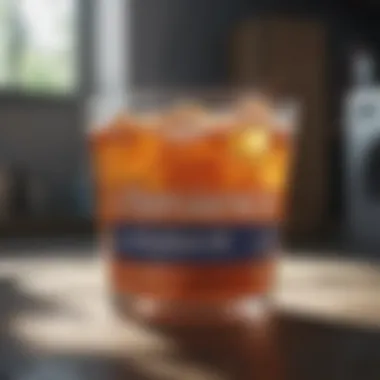
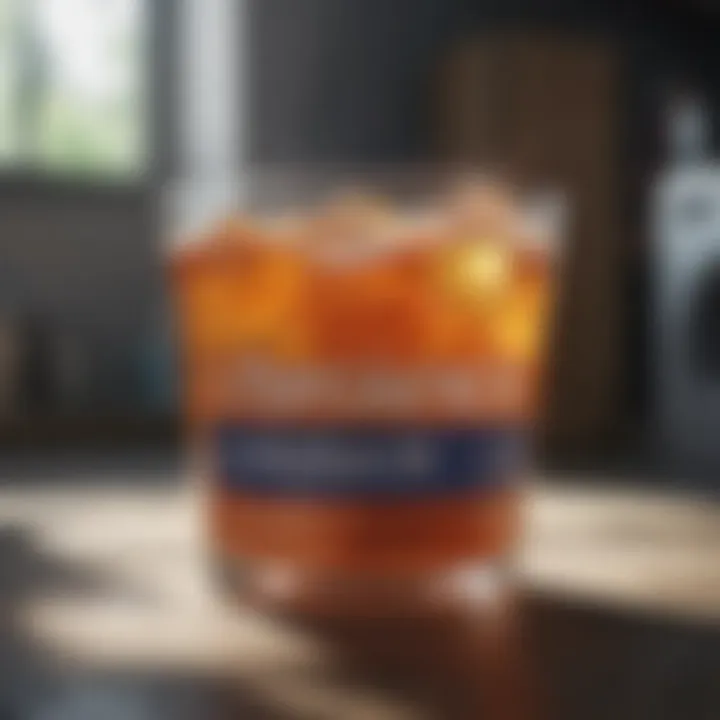
Intro
Creating your own laundry detergent might seem like an endeavor best left to seasoned DIY enthusiasts or science nerds, but the reality is that it can be an enjoyable and fulfilling task for any householder. Making your own laundry detergent offers a unique set of advantages; not only does it empower you to control the ingredients going into your home, but it also allows you to tailor the mixture to your family's specific needs. In this guide, we will explore how to formulate an effective detergent, accompanied by crucial information about the ingredients you can use, potential customization options, and the safety measures to keep in mind.
What you may not realize is that crafting your own detergent can also serve as a small but meaningful step toward a more sustainable lifestyle. Commercial detergent products often contain chemicals that can harm the environment, but with a homemade solution, you can exercise more conscientious choices. The benefits also extend to your wallet, as creating your own laundry detergent can save you money over time. So, whether you are a homemaker looking to save a few bucks or an eco-conscious individual seeking to reduce household waste, this guide is for you.
By synthesizing practical advice with a thoughtful approach, we will provide you the knowledge and resources needed to embark on this laundry revolution. Ready to roll up your sleeves? Let's dive into the essentials!
Foreword to Homemade Laundry Detergent
Creating your own laundry detergent isn’t just a quirky trend; it is an empowering choice that leads to numerous benefits. With concerns about the detergent industry's impact on health and the environment on the rise, making your own provides a refreshing alternative. This article aims to explore both the reasoning and the practicalities behind crafting a homemade solution that meets today's household needs.
Understanding the Concept
At its core, homemade laundry detergent represents self-sufficiency and an understanding of what goes into our cleaning products. The basic premise is fairly straightforward: using readily available, often natural ingredients to scent, clean, and keep our clothing fresh. These components range from sodium bicarbonate to soap, working in tandem to break down stains without the synthetic chemicals piled into commercial detergents. The merit of such a method lies in transparency. You get to decide what’s in your product, rather than relying on the fine print of a branded package.
Homemade solutions encapsulate a few underlying principles: simplicity, effectiveness, and affordability. Ingredients can be tailored to maximize cleaning power while minimizing environmental impact. For instance, soda and borax work wonders on tough grime, while bringing a natural fragrance is as easy as a few drops of essential oils. In this way, one not only understands the detergent itself but also becomes acutely aware of their laundry habits and choices.
The Case for DIY Detergent
Turning toward DIY laundry detergent presents a compelling case, especially when viewed through various lenses. Firstly, from a budgetary standpoint, crafting your own detergent can save a substantial sum. Commercial detergents often come with a steep price tag, especially when billed by the large bottle.
"Why spend a fortune when you can whip up a basic formula for a fraction of the cost?"
Additionally, for those who lean into eco-friendliness, homemade options frequently utilize sustainable ingredients that are less harmful to aquatic ecosystems than many mass-produced brands, which often rely on phosphates and other harsh chemicals. This shift not only makes for lighter ecological footprints but also contributes positively to communities and waterways.
Moreover, many folks find the act of creating their own detergents almost meditative. It allows for creativity, a sense of achievement, and even a way to engage family members in keeping the home fresh and clean. It’s not merely about washing clothes; it’s about crafting solutions that align with personal values and lifestyle.
In summary, the move towards homemade laundry detergent represents a blend of practicality, cost-savings, environmental consciousness, and personal empowerment. This comprehensive guide aims to demystify the process, presenting approachable methods and essential ingredients that transform this simple act into something much greater.
Benefits of Making Your Own Laundry Detergent
Creating your own laundry detergent has become not just a trend, but a practical solution that merges both economy and environmental stewardship. As more individuals become aware of the chemicals found in commercial products, many are seeking alternatives that do not compromise on effectiveness while aligning with their values and budget. Making your own laundry detergent presents an array of benefits worth considering.
Cost-Effectiveness
One of the most compelling reasons to craft your own laundry detergent is undoubtedly the cost savings. Traditional detergent brands can be pricey, with some name brands commanding a premium for their so-called superior cleaning power. By contrast, homemade detergent allows you to control costs, utilizing ingredients that are often found in bulk at lower prices.
- Affordability: A batch of homemade detergent can clean an entire load of laundry for mere cents compared to dollars spent on commercial options. Leveraging ingredients like borax or baking soda—often available at your local grocery store or online—can stretch your dollars even further.
- Reduced Packaging Costs: Aside from the actual product, the waste from detergent packaging also weighs heavily on the wallet. By making your own, you can often forgo purchasing expensive plastic containers, opting instead for reusable vessels.
- Long-Term Savings: This DIY approach not only cuts costs immediately but also leads to ongoing savings, particularly if you wash multiple loads each week.
Environmental Considerations
As concerns about pollution and sustainability grow, making your own laundry detergent can significantly reduce your ecological footprint. Commercial detergents are notorious for containing harsh chemicals that harm both waterways and the environment. By switching to a homemade alternative, you can help alleviate some of these concerns.
"Every small step towards eco-friendliness counts; making your own detergent is a stride in the right direction."
- Biodegradable Ingredients: Many DIY recipes focus on safe, biodegradable substances that break down more easily in the environment, unlike many commercial detergents that can persist and cause harm.
- Reduction of Chemical Intake: Homemade detergents typically use fewer chemicals overall. This is especially vital for households with sensitive skin or allergies, where avoiding harsh synthetic substances can lead to better health outcomes.
- Minimized Plastic Waste: As mentioned earlier, making your detergent reduces the reliance on single-use plastics. By using recycled jars or containers, you actively contribute to less waste production.
Customization Options
Creating your laundry detergent isn’t just about going green or saving money; it also gives you the unique advantage of customization. Depending on individual preferences and specific laundry needs, crafting your detergent can be a highly tailored experience.
- Fragrance Control: Some individuals find commercial fragrances overwhelming or even irritating. By opting for homemade detergent, you can choose natural scents through essential oils. Adding a few drops of lavender or lemon can not only provide a pleasant aroma but also embrace an aromatherapeutic atmosphere in your laundry space.
- Stain Resistance: Different stains require varied treatments. By creating your detergent, you can adjust the formulation to suit your specific needs. For deeper cleaning, including ingredients like washing soda can give your detergent an extra boost.
- Allergy-Sensitive Formula: If someone in your household has allergies, making your own detergent allows you to omit particular allergens or harsh chemicals, creating a formula that’s safe and effective for everyone.
In summation, making your own laundry detergent is not just a savvy choice; it's a step towards greater economic efficiency, environmental responsibility, and personalized laundry solutions. Whether you're seeking to save money, care for the planet, or tailor your laundry experience, the benefits are clear and compelling. As we delve deeper into the essential ingredients and methods, you'll discover just how accessible and rewarding this venture can be.
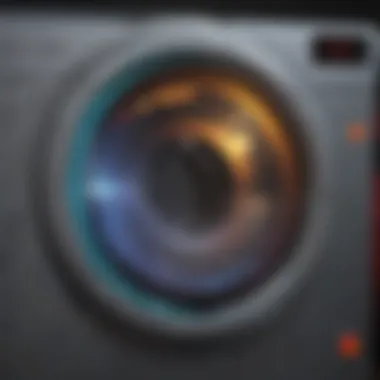
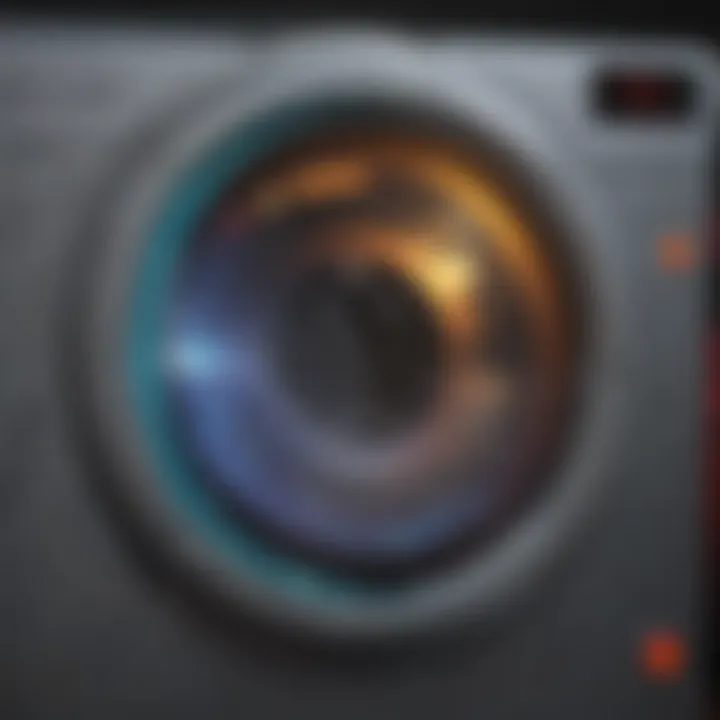
Essential Ingredients for Homemade Laundry Detergent
Creating your own laundry detergent is not just about mixing chemicals and hoping for the best. It's a strategic approach that hinges on understanding the essential ingredients that constitute an effective cleaning formula. Each ingredient plays a significant role in cleaning efficacy, safety, and overall user experience. When diving deep into these components, you’ll realize that choosing the right materials can elevate your detergent from merely functional to truly brilliant. Not only do these ingredients work in tandem to tackle dirt and odors, but they also allow for customization based on individual preferences and needs.
Sodium Bicarbonate: The Versatile Cleaner
Sodium bicarbonate, commonly known as baking soda, is a powerhouse when it comes to cleaning. Its alkaline nature allows it to break down dirt and grease effectively. In homemade laundry detergent, it acts not just as a cleaning agent but also as a deodorizer—neutralizing unpleasant odors that often linger in fabrics.
Additionally, sodium bicarbonate helps maintain brightness in colors and whites, which means your fabrics stay vibrant and fresh longer. It's safe for all machines and is particularly vital if you have hard water, as it can help soften the water, enhancing the effectiveness of the detergent. Essentially, it’s like the jack-of-all-trades in your laundry arsenal.
Borax: A Natural Mineral
Borax is another key player in the world of homemade laundry detergents. Also known as sodium borate, it’s a natural mineral that has been used for cleaning purposes for over a century. This compound not only boosts the cleaning power of your detergent but also helps control odors and fight stains.
What's fascinating about borax is its ability to soften water, making it easier for other cleaning agents to shine. It can tackle tough stains, which is especially useful for households with children or pets. Moreover, borax is an eco-friendly option that doesn’t flood the environment with harsh chemicals, making it a responsible choice for those aiming to keep their homes green.
Soap: A Key Component
Traditional soap is integral to any homemade laundry detergent. It acts as a surfactant, helping water to interact better with grease and dirt. Made from natural fats and oils, soap can vary widely in its composition—from simple castile soap to more complex formulations.
Choosing the right soap is important. For instance, castile soap, derived from olive oil, is biodegradable and gentle. It's a wise pick for those with sensitive skin or allergies. On the flip side, some soaps may contain additives that could be harsher on skin or fabrics. Thus, it's crucial to scrutinize soap labels, ensuring you’re not introducing unwanted chemicals into your laundry routine.
Optional Additives for Enhanced Performance
To further tailor your laundry detergent, consider incorporating optional additives. These can enhance the cleaning power, fragrance, and stain-fighting capabilities of your homemade mix.
Essential Oils for Scent
Essential oils are a trending choice for adding a pleasant fragrance to laundry products. Scents like lavender or eucalyptus can transform the washing experience from mundane to aromatic bliss. But beyond mere fragrance, these oils often have antibacterial properties, further contributing to cleanliness in your laundry.
What makes them appealing is their natural origin; they're plant extracts, which aligns well with the eco-friendly mantra of DIY detergents. However, it’s worth noting that not all oils blend well. Care must be taken to select those that mix seamlessly to avoid residue or clogging in washing machines.
Color Safe Bleach Alternatives
When it comes to brightening whites without the risks associated with traditional bleach, color safe bleach alternatives shine. Ingredients like hydrogen peroxide can lighten fabrics without damaging colors. These alternatives help maintain the integrity of your clothes, preventing the over-bleaching often associated with conventional bleach products.
This is particularly important for those who wash a mixture of whites and colors, ensuring nothing gets ruined in the cleaning process. Given today’s trends toward sustainability, these alternatives have gained popularity, making them a smart choice—effective yet gentle.
In summary, understanding and utilizing these essential ingredients enables individuals to craft a unique laundry detergent that aligns with their cleaning needs and environmental philosophies. Not just any concoction, but a well-thought-out blend that respects fabrics and the planet alike.
Step-by-Step Guide to Making Laundry Detergent
Creating your own laundry detergent can feel like a daunting task, but a step-by-step guide can make the process manageable. It’s not just about mixing a few ingredients; it’s an art form that allows one to craft a solution tailored to specific needs, preferences, and environmental considerations. A thorough and methodical approach also ensures that the end product is effective, safe, and easy to use.
This guide is essential for anyone venturing into the DIY world of stain-fighting laundry products. Each step not only demystifies the process but also enhances understanding of the ingredients you’re working with. This way, the final product is not merely a substitute for the store-bought alternatives, but a personal blend reflective of individual values and household needs.
Gathering Necessary Supplies
Before diving in, it’s crucial to gather all necessary supplies for making your detergent. The right tools and materials set the stage for success. Here’s what you’ll need:
- Storage container: An airtight container to keep your detergent fresh and effective.
- Measuring tools: Accurate measuring cups and spoons ensure the correct proportions.
- Mixing spoon: A sturdy spoon for combining ingredients.
- Protective gear: Gloves to safeguard your skin from any irritants and a mask if sensitive to powders.
Getting organized at the start will save time and confusion later on. Make sure you have everything on hand so that once you start, you can keep the momentum going.
Simple Recipes to Start With
Once all supplies are laid out, it’s time to explore some simple recipes. Here, we’ll delve into both powdered and liquid options to suit different laundry preferences.
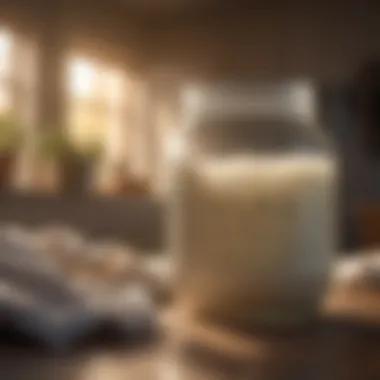
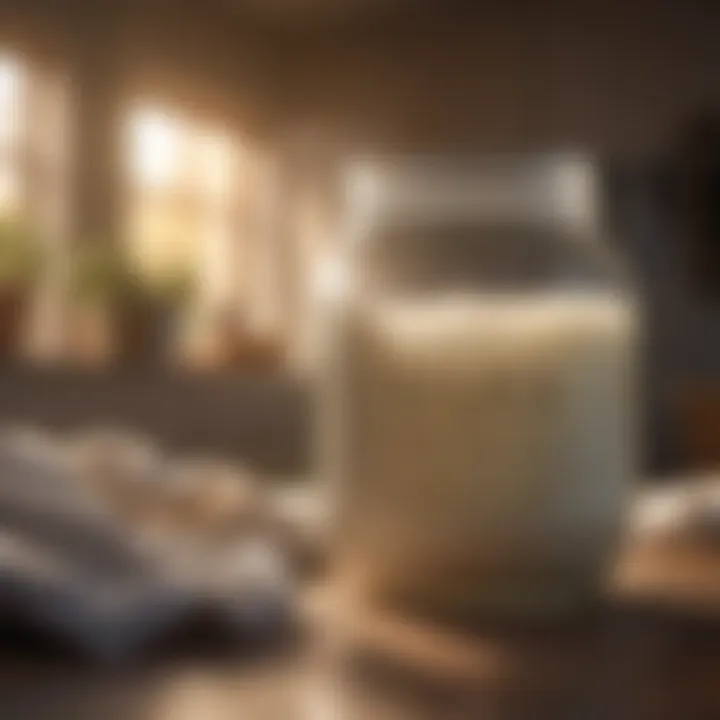
Powdered Detergent Recipe
One effective method for creating laundry detergent is the powdered recipe. This recipe shines due to its longevity and simplicity. The key characteristic of powdered detergent is that it doesn’t require any heating elements for preparation, making it both energy-efficient and user-friendly.
Ingredients include:
- 1 bar of soap (grated)
- 1 cup of borax
- 1 cup of sodium bicarbonate
What sets this recipe apart is the flexibility it offers. You can adjust ratios based on the hardness of your water or specific laundry demands. Plus, it possesses a longer shelf life compared to liquids. However, be mindful that it may not dissolve as easily in cold water, which some users find inconvenient.
While many find powdered detergents to be a staple in their laundry routine, others may notice a gritty residue on some fabrics, particularly in areas with hard water. The key is to experiment a bit and observe how it works with your washing machine and water type.
Liquid Detergent Recipe
If a liquid detergent is what you're after, this recipe is equally straightforward and has its own substantial benefits. Liquid detergent is well-known for its ability to dissolve quickly and work well at various temperatures, adding to its popularity.
Ingredients include:
- 1 bar of soap (shredded)
- 4 cups of boiling water
- 1 cup of borax
- 1 cup of washing soda
Utilizing a pot large enough to hold all ingredients is essential as you will mix everything in it. One of its standout qualities is that it’s usually more effective on greasy stains, offering a targeted approach to laundry challenges.
However, while storing liquid detergent can be a breeze, make sure to use a clear container to monitor how much is left, so you aren’t caught out with no detergent when laundry day rolls around. Also, consider shelf life as homemade liquid detergents may require more vigilance regarding preservation compared to the powdered version.
Safe Usage and Storage Practices
When embarking on the journey of creating your own laundry detergent, having safe usage and storage practices in mind is of utmost importance. These practices not only protect you and your family but also ensure that your homemade detergent maintains its effectiveness over time. Understanding these basics will help you reap the benefits of your efforts without running into unnecessary hassles or dangers.
Safety Precautions When Handling Ingredients
Working with raw ingredients to concoct laundry detergent can be refreshing but requires diligence. Here are several safety precautions to keep in mind:
- Wear Gloves: When mixing powders like sodium bicarbonate and borax, it’s wise to wear gloves. These substances can be irritating to the skin and might cause reactions in sensitive individuals.
- Use a Mask: Fine powders can kick up dust, which is best avoided. A simple mask can prevent inhalation of particles, making the experience safer and more comfortable.
- Avoid Eating or Drinking: Stay away from food or drinks in the vicinity of your workspace. This practice minimizes accidental ingestion of any harmful substances.
- Keep Ingredients Labeled: Always label your ingredients. This helps in identifying them quickly and ensures that they are appropriately stored away from children and pets.
Taking these precautions doesn’t just prevent accidents; they safeguard your entire laundry process, letting you focus on the task at hand.
Proper Storage Methods
Just as important as handling ingredients safely is how you store them once prepared. Proper storage methods will enhance the longevity of your homemade detergent while keeping it effective for numerous washes.
- Use Airtight Containers: For both liquid and powdered detergents, opt for airtight containers to prevent moisture intrusion and clumping. Glass jars or sturdy plastic containers often serve well in this regard.
- Store in a Cool, Dry Place: Heat and humidity can spoil your detergent. A closet shelf is often a great choice as it provides a stable environment away from fluctuations.
- Separate from Children’s Reach: If there are little ones running about, ensure that the detergent is stored high on shelves or in cabinets that they cannot reach. This significantly lowers any risk of accidental ingestion.
- Periodic Check-Up: Regularly check on your detergent’s condition to ensure there's no spoilage or changes in smell or texture, which could indicate breakdown.
In summary, following these safety and storage guidelines enhances your experience of making and using homemade laundry detergent. The little effort invested in safe practices pays off in making laundry a smooth and hazard-free task.
"Safety is not a gadget but a state of mind." Sticking to proper guidelines can transform your laundry routine from mundane to manageable, creating a healthy cleaning atmosphere.
Evaluating Detergent Effectiveness
When you've taken the time and effort to create your own laundry detergent, it’s only natural to want to assess its performance. Evaluating the effectiveness of your homemade detergent is not merely about superficial findings; it's about ensuring that your hard work results in clean clothes while being mindful of the environment. Knowing how to gauge cleanliness and make necessary adjustments can optimize your laundry routine and enhance your satisfaction with the results.
Testing for Cleanliness
Determining if your homemade detergent is doing its job boils down to a few types of tests, as each fabric stain can present its own challenge. Start by doing a
"clean test": Wash a set of test fabrics with known amounts of dirt, grease, or other stains using your DIY detergent. This provides a clear picture of how effective it is in combating different soil types.
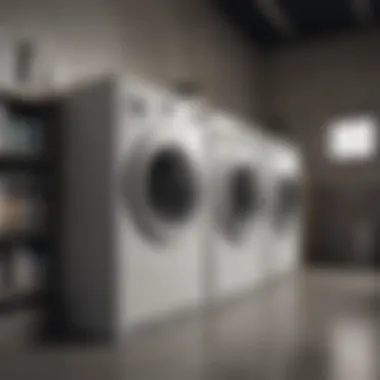
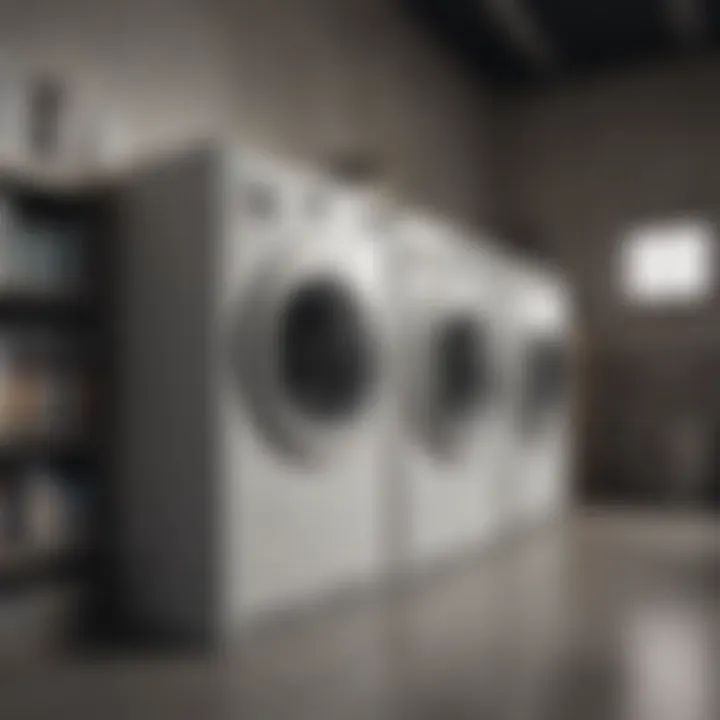
After washing, inspect the fabric closely. Are the stains gone, or do they have a stubborn residue lingering? Less than perfect results might signal that tweaks are necessary. A common approach is to adjust the quantity of detergent used during each wash cycle. Sometimes, less is more, and other times, a bit more detergent provides a noticeable impact.
The water temperature can also influence the cleaning power of your detergent. If your detergent is designed for cold water but you're washing in hot water, results could vary. As a handy tip, keep a laundry journal tracking detergents used, stains on fabrics, and the outcomes. This can help you identify patterns of effectiveness.
Adjusting Recipes Based on Eco-Impact
It's not enough for a washing solution to simply clean; today’s conscious washing habits require attention to environmental impacts too. Begin by examining the ingredients in your detergent recipe. Opt for natural, biodegradable components whenever possible, since this choice not only benefits your clothes but also reduces pollution in waterways.
If you notice that your detergent leaves behind residues or isn't cleaning effectively, consider refining your recipe. This might involve adjusting the proportions of washing soda or borax. With various types of fabric, keep in mind that some may react differently to certain substances. For instance, using coconut oil as a base can enhance cleaning properties while also being gentler on the environment compared to synthetic surfactants.
Incorporating essential oils—like tea tree or lavender—can not only impart a pleasant scent but also provide natural antibacterial properties. But, be mindful of how much you use, as sometimes too many additives can decrease effectiveness. It's a balancing act of finding the perfect formula that works for your home, your laundry, and the planet.
Engaging in discussions on platforms like Reddit can also expose you to a community that shares experiences and tips which might help refine your homemade detergent even further.
By taking careful notes, testing consistently, and adjusting your formulas based on environmental considerations, you can maximize the usability of your homemade detergent and contribute positively to both your household and the global conversation on eco-friendly practices.
Common Issues and Troubleshooting
When it comes to crafting your own laundry detergent, understanding potential hurdles is just as crucial as knowing the ingredients. Anyone eager to save a buck or go green might whip up a batch of detergent with delight. Yet, once they're elbow-deep in laundry, common issues can crop up, leaving them scratching their heads. Knowing how to address these matters not only enhances the experience but also guarantees the effectiveness of the homemade product.
By tackling common problems like persistent stains or annoying odors, one can ensure clean clothes without throwing money down the drain. It's these real-life quirks that often make or break the laundry day.
Addressing Stains and Odors
Stains can be a real thorn in your side, especially if they seem to cling more tightly than a burr on a dog’s tail. Not all stains are created equal, and recognizing the type can help in addressing them effectively. For instance, oil stains might require a different approach than wine spills. One option for treating stubborn stains is using a mix of baking soda and dish soap to pre-treat before the wash. Here’s how:
- Mix: Combine one part baking soda with two parts dish soap to form a paste.
- Apply: Rub the paste onto the stained area gently.
- Wait: Let it sit for about 30 minutes.
- Wash: Then, throw it in with your regular load.
Don’t forget about odors. Sometimes, clothes can smell less than fresh even after a cycle. In such cases, adding a cup of white vinegar during the rinse cycle can work wonders. Vinegar neutralizes odors without leaving a vinegary scent behind.
Pro Tip: Ensure you’re not overloading the washer. This can lead to both stains and odors not getting washed out effectively.
Evaluating Concentration Levels
Concentration levels refer to how potent your detergent is and play an integral part in its cleaning effectiveness. Too weak, and you might as well toss your clothes in a pond; too strong, and you can cause build-up in your washing machine or even damage your fabrics.
Determining the right concentration often comes down to testing. Begin with small batches and adjust gradually. Consider these steps:
- Start Simple: Use a basic recipe with clear measurements.
- Assess After Wash: After a load, pay attention to the results. Are the garments clean without residue?
- Adjust Accordingly: If your clothes still have stains or the washer smells musty, consider increasing the active ingredients.
Ever wondered how much detergent is really needed? An average load of laundry requires about 1/4 to 1/2 cup of detergent. But, depending on the fabric, type of soiling, and machine, you'll want to adjust that figure accordingly.
When the balance is right, you will notice cleaner results, less fabric wear, and a washer that runs smoothly. It may take a few tries, but this trial-and-error approach is often the best way to nail down the proper detergent consistency suitable for your unique washing needs.
End
Creating your own laundry detergent isn't just a chore; it’s a step towards a more sustainable lifestyle. In the previous sections, we’ve explored the various advantages of making your own detergent—from cost savings to environmental benefits and the ability to tailor the formula to meet your specific needs. By understanding what goes into your cleaning products, you’re not only taking control over your household routines but also contributing to a greater awareness about the materials we use daily in our homes.
Recap of Key Points
In case you missed anything, here’s a quick rundown of the main takeaways:
- Understanding Ingredients: Familiarizing yourself with essential components like sodium bicarbonate, borax, and soap is crucial in formulating an effective washable.
- Benefits: Homemade detergent can be significantly cheaper than retail options while being kinder to the planet.
- Customization: You have the freedom to add scents or other properties that suit your personal preference, making each laundry cycle a true reflection of your style.
- Safety and Storage: Knowing how to safely handle and store your cleaning products ensures both your and your family’s safety in the household.
"Not only does creating your own detergent empower you, but it also sends a message about the importance of making informed choices."
Encouragement for Experimentation
Now that you’ve got the basics down, consider this your nudge to take the plunge and start experimenting! Every household is different, and what works for one may not work for another. Don’t be shy about trying new combinations or modifying recipes to suit your needs. Use essential oils for a personal touch or adjust concentrations to tackle stubborn stains. Remember, failure is often the pathway to success. If a batch doesn’t perform as expected, analyze it and make adjustments. The beauty of DIY is that you have the power to tweak and improve instead of being confined to pre-made formulas.
As you embark on this journey, share your findings and discoveries with others. Join community discussions or forums, as places like Reddit provide excellent platforms to connect with fellow DIY enthusiasts for tips and support. Your adventure in crafting your own laundry detergent can lead to invaluable knowledge and potentially inspire others around you.
Making your own laundry detergent isn't just about saving a few bucks; it's about creating healthier homes and fostering a culture of experimentation.















